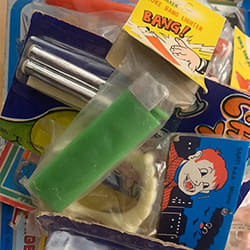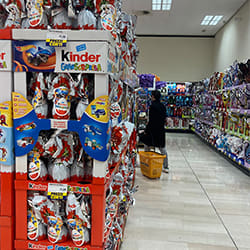
Every town in Portugal has a central marketplace, something like what we would call a local farmer’s market today. They can be any size, but you’ll always have greengrocers, fishmongers, butchers, and florists there.
Last weekend, the city of Mafra asked the high-schoolers at a local music school to perform Christmas carols at the market. The market was actually renovated very recently, so I’m guessing that the move was part of the city’s promotional efforts.
When I first moved to Mafra, this is how it looked.


The space felt sterile, with no dividers between shops and fruits and vegetables just piled haphazardly on top of one another. The butcher displayed cuts of meat that let you see exactly what they were—pig’s heads, skinned rabbits, skinless goat heads, piglets… how terrifying the tools they had hanging on the wall!
Now, though, it’s transformed into this beautiful space.


It’s just a coincidence, but the woman running the produce stand is the same woman in the original photo I took. You really get a sense of how time has passed seeing how she’s aged.


I think the rough, unsophisticated original market had more character, but now the whole place is brighter, and the use of wood gives it a clean architectural design. The natural materials maintain the simplicity of the space and better showcase the products. While I do feel a sense of loss as Portugal modernizes, I can understand the need for renovations that bring greater harmony overall.
One of the big changes to the new market is the addition of a café. I haven’t been there yet, but apparently they regularly have local chefs come in to give cooking demonstrations.

The carolers gathered together to sing at the front of the market, too. The performance seemed to be a success, despite the Christmas music blaring from speakers along the road, passersby, traffic, and (I might add) the market ladies hawking their wares.

If you travel up this road, you’ll reach the Palace of Mafra at the center of the city. The palace has a library collection of rare and valuable books, combined with a famous church and monastery that has six pipe organs and two bell towers. Since it’s the Christmas season, all the nativity scenes and Christmas trees are out, bringing a festive holiday mood to the streets.



My treasure today was natural eucalyptus honey produced in Mafra. They let me taste it, and it was richer than the usual multifloral or rosemary honey I buy. I was so impressed with its unique taste that I couldn’t help saying, “Wow!” in surprise. Seeing my reaction, they shoved a spoon in my face and said, “You like richer flavor? Try this!” The spoon had chestnut flower honey on it. The color and texture were like aged pine sap, but I tried a bit anyway. It was intense. And not only that, it instantly made me want to choke. It definitely wasn’t my thing.
I bought a 1-kg jar of eucalyptus honey, dreaming of all the food I would drizzle it on. I choked back the flavor of the pine sap, thinking that next time I’d buy a mild honey like orange blossom.





























































